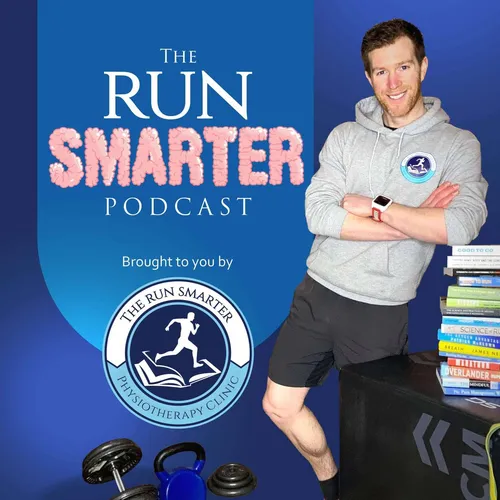Latest Research: Bone Health, Hamstring Length, Negative Splits, Foam Rolling & Massage Guns on DOMS
- Author
- Brodie Sharpe
- Published
- Sun 24 Aug 2025
- Episode Link
- https://share.transistor.fm/s/06029718
Learn more about Brodie's Research Database & AI Assistant 📄🔍
For MORE Run Smarter Resources 🏃♂️📚
- Including Free Injury Prevention Courses 🩹🎓
- The Run Smarter Book 📖
- Access to Research Papers 📄🔍
- & Ways to Work with Brodie 🤝👟
👉 CLICK HERE! 🎉✨
In this month’s research breakdown, Brodie dives into four fascinating studies every runner should know about. From bone health and marathon pacing to hamstring flexibility and recovery tools, these findings reveal how science can help you train smarter and avoid common pitfalls.
What You’ll Learn in This Episode:
- Bone Health in Distance Runners
Why running alone isn’t always enough for strong bones, and the crucial roles of nutrition, vitamin D, strength training, and recovery. Learn the red flags—like stress fractures and missed periods—that signal compromised bone health. - The Science of Negative Splits in Marathons
How running the second half faster than the first can preserve glycogen, improve thermoregulation, reduce cardiac drift, and even protect your biomechanics. Plus, practical training strategies to master pacing discipline. - Hamstring Flexibility & Performance
A small but insightful study shows how hamstring tightness may reduce quadriceps strength—but doesn’t necessarily affect speed or endurance. What this means for your strength balance, mobility work, and injury prevention. - Foam Rolling vs Massage Guns for DOMS
Which recovery tool actually works? Foam rolling improved muscle tone, elasticity, and stiffness faster than rest, but neither reduced soreness compared to doing nothing. Find out what this means for your post-run recovery routine.
Key Takeaways for Runners:
- Fuel properly—low energy availability harms bone health.
- Strength training twice a week boosts bone density and performance.
- A slight negative split is often the optimal marathon pacing strategy.
- Hamstring flexibility supports strength balance but doesn’t guarantee speed gains.
- Foam rolling may help restore function, but don’t expect it to erase soreness.
